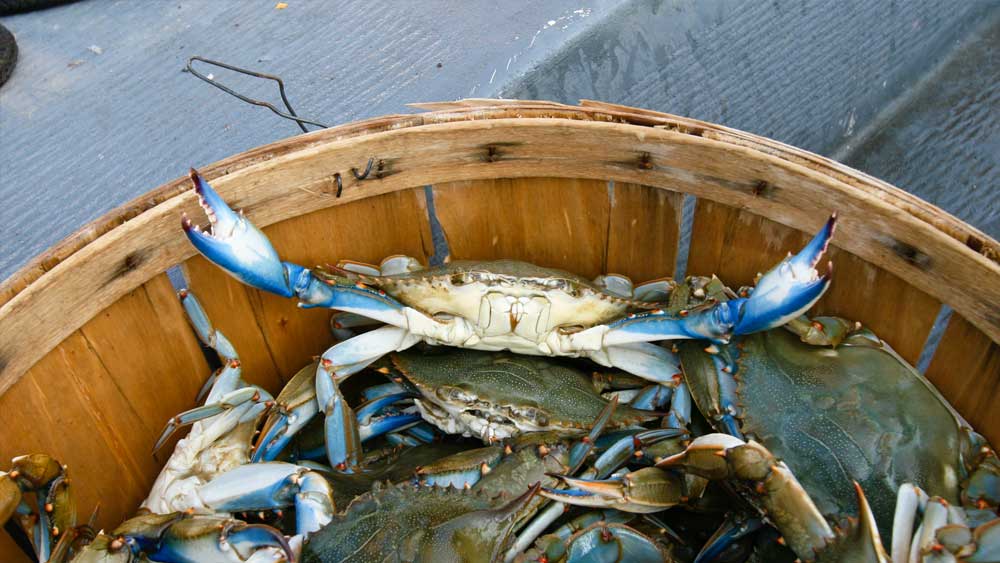As recently reported in the Chesapeake Bay Journal,
Responding to employers’ calls, including those of crab meat processing companies in Virginia and Maryland, the federal government announced March 5 that it would release an additional 35,000 temporary visas for foreign workers. That still may not be enough to quench the Chesapeake Bay seafood houses’ demand for temporary workers, according to the trade group that represents the industry. ... Several seafood company owners and watermen had implored the Trump administration to issue 64,000 more visas, the cap set by Congress.1
But why are Chesapeake Bay blue crab harvesters shorthanded, asking for more immigrant visas?
Initially, the Department of Homeland Security doled out 33,000 work visas, which are in effect for six months beginning April 1. With the added 35,000 visas, the total still falls well short of the 100,000 slots that U.S. employers nationally had sought to fill. … The temporary visas, known as H-2B visas, are made available annually to workers in seafood, landscaping, construction and other seasonal fields. ... Only three of the county’s nine picking houses had received their workers during the first visa release, businesses say. Now, because of the sweeping coronavirus pandemic, it’s unclear if and when the additional 35,000 workers will arrive, said Amanda Wright, CEO of Virginia-based Phoenix Labor Consultants. … Mexico is one of the main sources of seafood workers. It’s likely they will be considered essential workers, but the United States has shuttered its embassy consulates in Mexico, which threatens to halt the visa application process.1
So, the coronavirus pandemic is curtailing crab harvesting, and the Maryland crab harvesting season begins in April, which is just around the corner. So, what will happen if the Chesapeake Bay’s blue crabs (i.e., Callinectes sapidus) don’t get harvested at business-as-usual percentages? How would this affect the bay’s crab population?
Ironically, both crabs and many environmentalists are probably relieved that the Chesapeake Bay’s blue crab population will not undergo the usual commercial watermen’s “harvest pressure.” This might allow these blue crabs to live longer, grow larger, and eventually get eaten by someone—but that someone might not be human, because many sea turtles (but not herbivorous green sea turtles) consume blue crabs.2
And how did God equip crab-eating sea turtles—like Kemp’s ridley turtles (Lepidochelys kempii) and loggerhead turtles (Caretta caretta)—to eat blue crabs?
Consider the large and powerful beak jaws of a crab-eating sea turtle. Its rigid beak can crush a crab’s shell and grind it up for swallowing.3 In other words, its anatomy is perfect for eating crabs. Who gets credit for the sea turtle’s food-ingesting anatomy? God does.
If God had not designed and constructed those turtles’ digestive systems to accommodate crabs, then crabs would have no dietary value for those turtles. Food must be ingestible to help anyone, plus its biochemical content must provide nutrition that is usable by the eater.
In other words, God shows His bioengineering genius by designing external and internal body parts that can digest certain foods, plus God designs and provides foods that can be collected for ingestion and digestion, all to the benefit of the eater. So useful food is no accident, either to a sea turtle or to a human!
Consequently, whatever you are eating—whether it be a Chesapeake blue crab or anything else that is nutritious—give thanks to God that the food is helping you to live another day.
In fact, the apostle Paul once used edible food as a proof of God’s caring providence, since He is the Creator Who equipped us to benefit from eating—and He provides us with food to eat.4
Nevertheless [God] did not leave Himself without witness, in that He did good, gave us rain from heaven and fruitful seasons, filling our hearts with food and gladness.5
References
1. Cox, J. 2020. Chesapeake crab industry remains crippled by visa shortage, coronavirus. Chesapeake Bay Journal. 4(30).
2. Of course, earlier stages of a blue crab’s life cycle face predator risks from other animals: the larval stage is food for jellyfish, some small fish, and even shrimp; older crabs (especially during molting) are prey for larger fish, some birds (like diving ducks, as well as coastal marsh-dwelling birds, like herons and egrets), and some estuary mammals.
3. Wyneken, J. NOAA Technical Memorandum NMFS-SEFSC-470: The Anatomy of Sea Turtles. U.S. Department of Commerce. Miami, FL: National Marine Fisheries Service, 108-114.
4. 1 Timothy 4:4-5. See also Johnson, J. J. S. Our Daily Bread: How Food Proves God’s Providence. Acts & Facts. 40 (4): 8-9.
5. Acts 14:17.
*Dr. Johnson is Associate Professor of Apologetics and Chief Academic Officer at the Institute for Creation Research.














